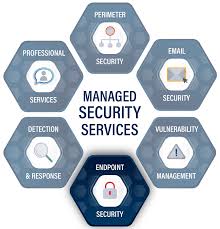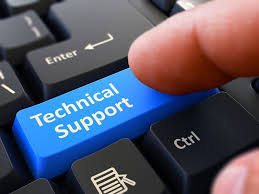In 2025, small businesses are relying on technology more than ever before. Whether it’s cloud-based collaboration, cybersecurity, or customer support, having reliable IT infrastructure is no longer a luxury—it’s a necessity. But the big question remains: should small businesses hire an in-house IT team or partner with a managed IT services vs In-House IT provider?
The answer depends on factors like budget, business size, data security needs, and scalability goals. This article compares both approaches in detail and helps business owners make a smart, cost-effective decision.
Understanding the Basics: In-House IT vs. Managed IT Services
An in-house IT team consists of full-time or part-time employees who work within your organization. They are responsible for all IT operations—from setting up devices to handling network issues and data backups.
On the other hand, managed IT services involve outsourcing your IT needs to a third-party provider. These companies deliver 24/7 monitoring, help desk support, cybersecurity, system updates, and much more—usually through a monthly service plan.
Cost Comparison: Which One Is More Affordable?
One of the biggest deciding factors for small businesses is cost. Hiring a full-time IT specialist or building a team comes with high overhead expenses: salaries, benefits, training, tools, and hardware.
According to recent industry reports, the average cost of an in-house IT technician in the U.S. is over $70,000/year, not including infrastructure or overtime costs.
By contrast, managed IT services usually charge a flat monthly fee, often between $1,000–$5,000/month, depending on your needs. This predictable pricing makes budgeting easier and more efficient.
Transition: For startups and small teams, avoiding the large upfront cost of an internal IT department can free up funds for growth-focused areas like marketing or product development.
Scalability and Flexibility Of Managed IT Services vs In-House IT
Business needs change—especially for startups or growing companies. Managed IT providers offer on-demand scalability, allowing you to expand or reduce services based on your business’s stage and needs.
With in-house IT, scaling up usually means hiring more staff, buying new equipment, or upgrading software licenses. This process is not only expensive but also time-consuming.
On the flip side, managed IT services give you instant access to tools, technicians, and expertise without the long-term commitment of employment contracts.
Expertise and Technology Access
Managed IT service providers typically employ a team of specialized technicians, engineers, and cybersecurity experts. This gives small businesses access to enterprise-level expertise without paying enterprise-level salaries.
In contrast, an in-house IT generalist may be skilled in a few areas but lack deep knowledge of specific technologies like cloud computing, firewall management, or ransomware defense. It can be risky for companies that depend on compliance or handle sensitive customer data.
Transition: When it comes to emerging tech and constant updates, managed IT providers often have the upper hand.
24/7 Monitoring and Response Time
Cyberattacks don’t wait for business hours. With cyber threats rising in 2025, businesses need around-the-clock IT monitoring.
Managed IT services offer 24/7 support, ensuring real-time alerts and quick resolutions to potential risks. This is especially helpful for e-commerce stores or remote teams that operate outside the traditional 9–5 window.
While some in-house teams can provide after-hours coverage, it usually means overtime pay or hiring additional shifts—something small businesses can rarely afford.
Security & Compliance Of Managed IT Services vs In-House IT
Data security and regulatory compliance (e.g., HIPAA, GDPR, CCPA) are more critical than ever. Managed IT firms usually follow strict protocols and offer built-in services such as:
- Endpoint detection & response (EDR)
- Data encryption
- Firewall & antivirus management
- Regular vulnerability scans
- Compliance audits
In-house IT teams might overlook or delay these updates, especially if they’re overwhelmed with daily troubleshooting tasks. One data breach could cost a business thousands—or worse, shut it down permanently.
Customization and Control
While managed IT services are cost-effective and flexible, some businesses prefer full control over their infrastructure. In-house teams provide the ability to design IT systems from scratch and make decisions on-the-fly.
If your company uses proprietary software, has a niche infrastructure, or requires deep system customization, having someone on-site might feel more efficient.
However, many modern MSPs (Managed Service Providers) now offer hybrid solutions—where part of your IT operations remain internal and the rest is managed externally. This approach offers the best of both worlds.
Reliability and Risk Management Of Managed IT Services vs In-House IT
Redundancy and disaster recovery are vital parts of modern IT. Managed service providers typically include data backup, failover systems, and disaster recovery planning in their packages.
If your in-house IT team isn’t experienced in business continuity planning, your company may face long downtimes in the event of a server crash or cyberattack.
With managed services, uptime guarantees and service-level agreements (SLAs) ensure higher availability, faster recovery, and minimal risk.
Summary Table: In-House vs. Managed IT Services
| Feature | In-House IT | Managed IT Services |
| Initial Cost | High (hiring, setup) | Lower (monthly fee) |
| Scalability | Limited | High |
| Expertise | Varies | Advanced, multi-specialist |
| Availability | 9–5 or limited | 24/7 |
| Security & Compliance | Requires training | Included |
| Disaster Recovery | Manual or missing | Standard |
| Customization | High | Moderate to high |
Which One Should You Choose?
If you’re a small or medium-sized business looking for reliability, cost control, and access to the latest technology, managed IT services are usually the better option.
However, if your company handles niche infrastructure, requires daily on-site support, or needs real-time customization, an in-house IT team might serve you better—or you could adopt a hybrid approach.
At Remote Expert Solutions (RES), we provide scalable, secure, and affordable managed IT services for small businesses across the USA, blending proactive support with personalized strategy.
Advantages of Managed IT Services
- Predictable, budget-friendly monthly costs
- Round-the-clock monitoring & support
- Access to expert technicians & security professionals
- Fast deployment of new tools & technologies
- Reduced downtime and stronger disaster recovery
- Compliance with industry standards and regulations
- Scalable as your business grows
FAQs: Managed IT vs. In-House IT
Q1: What is the main difference between managed IT services vs in-house IT?
Managed IT is outsourced support and services, while in-house IT involves hiring your own team to handle everything internally.
Q2: Which is cheaper—managed IT or in-house IT?
For most small businesses, managed IT services are more cost-effective due to fixed pricing and fewer HR-related expenses.
Q3: Is managed IT secure enough for sensitive data?
Yes. Reputable providers include cybersecurity, encryption, firewalls, and compliance services.
Q4: Can I switch from in-house IT to managed services?
Absolutely. Many businesses transition smoothly and may even keep one in-house technician while outsourcing the rest.
Q5: Do managed IT services offer emergency support?
Yes. Most providers offer 24/7 emergency response as part of their SLA (Service-Level Agreement).
Q6: Can a hybrid IT model work for my company?
Yes. A mix of in-house and outsourced IT offers flexibility, especially for companies with complex infrastructure.






